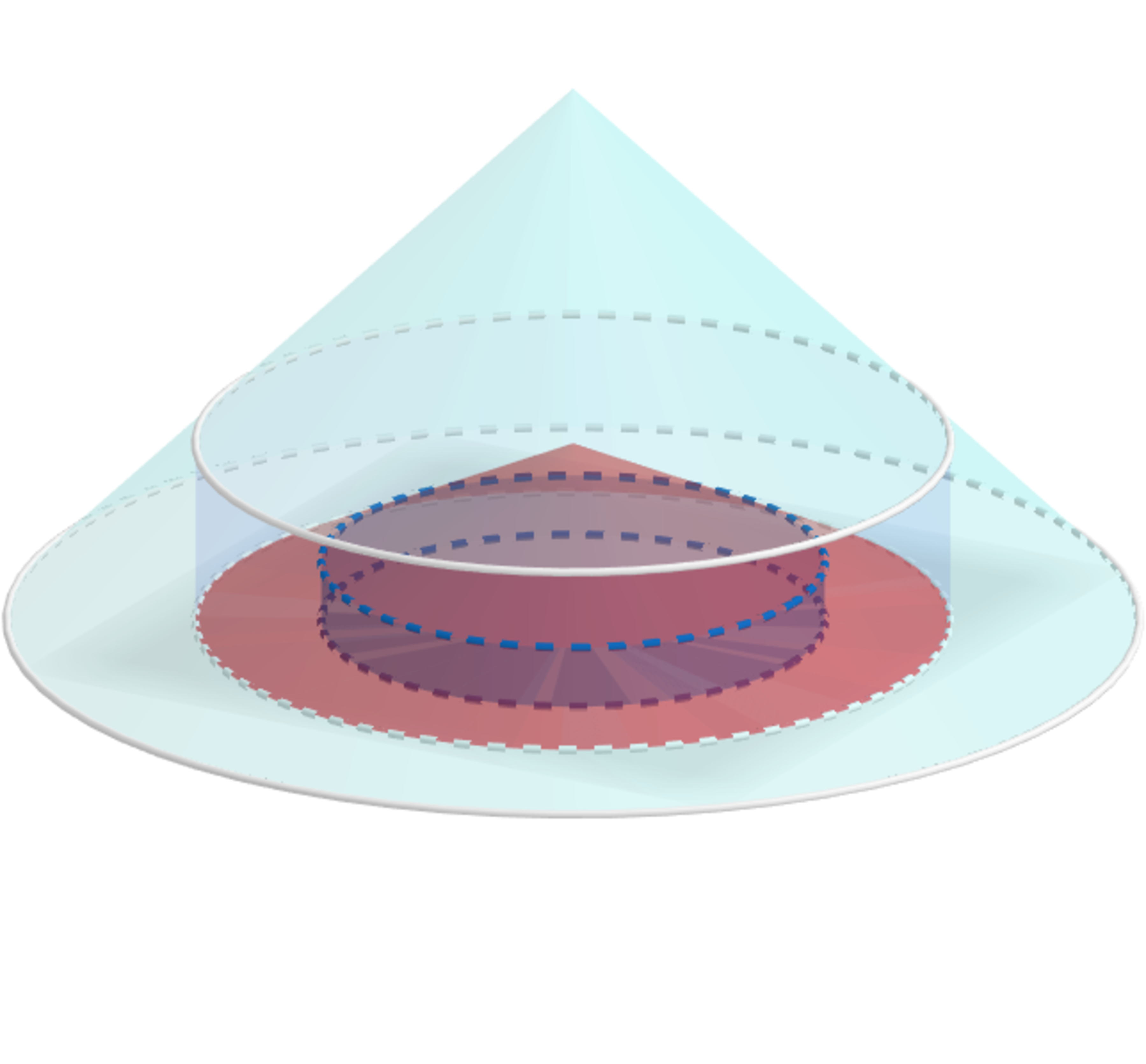Nested Cylinders and Cones

For each positive integer n ,
Let V c ( n ) be the volume of the largest right circular cylinder inscribed in a right circular cone of volume V p ( n )
and
Let V p ( n + 1 ) be the volume of the right circular cone inscribed in the right circular cylinder of volume V c ( n ) .
Let V p = ∑ n = 1 ∞ V p ( n ) and V c = ∑ n = 1 ∞ V c ( n ) .
If V p ( 1 ) 2 V p ∗ V c = ( c a b ∗ b ) b , where a , b and c are coprime positive integers, find a + b + c .
The answer is 28.
This section requires Javascript.
You are seeing this because something didn't load right. We suggest you, (a) try
refreshing the page, (b) enabling javascript if it is disabled on your browser and,
finally, (c)
loading the
non-javascript version of this page
. We're sorry about the hassle.
1 solution
At the end, the problem says to find a + b + c + d ; this part should be removed.
V p ( 1 ) = 3 1 π R 1 2 H 1 and V c ( 1 ) = π r 1 2 h 1
The two right triangles in the above diagram are similar ⟹ R 1 R 1 − r 1 = H 1 h 1 ⟹ h 1 = R 1 R 1 − r 1 H 1 ⟹ V c ( 1 ) = π R 1 H 1 ( R 1 r 1 2 − r 1 3 ) ⟹
d r 1 d V c ( 1 ) = π R 1 H 1 r 1 ( 2 R 1 − 3 r 1 ) = 0 ⟹ r 1 = 3 2 R 1 ⟹ h 1 = 3 1 H 1
and p ( 2 ) inscribed in c ( 1 ) ⟹ R 2 = r 1 and H 2 = h 1
⟹ r 2 = 3 2 R 2 = 3 2 ( 3 2 ) R 1 = ( 3 2 ) 2 R 1 , h 2 = 3 1 H 2 = 3 1 ( 3 1 ) H 1 = ( 3 1 ) 2 H 1 , R 3 = r 2 , H 3 = h 2 , r 3 = 3 2 ( 3 2 ) 2 R 1 , h 3 = 3 1 ( 3 1 ) 2
In General:
R n = ( 3 2 ) n − 1 R 1
H n = ( 3 1 ) n − 1 H 1
r n = 3 2 ( 3 2 ) n − 1 R 1
h n = 3 1 ( 3 1 ) n − 1 H 1
⟹
V p ( n ) = 3 1 π R n 2 H n = ( 2 7 4 ) n − 1 V p ( 1 )
and
V c ( n ) = π r n 2 h n = 9 4 ( 2 7 4 ) n − 1 V p ( 1 )
⟹
V p = V p ( 1 ) ∑ n = 1 ∞ ( 2 7 4 ) n − 1 = 2 3 2 7 V p ( 1 )
and
V c = ( 9 4 ) ( 2 3 2 7 ) = 2 3 1 2 V p ( 1 )
⟹ V p ( 1 ) 2 V p ∗ V c = ( 2 3 3 2 ∗ 2 ) 2 = ( c a b ∗ b ) b ⟹ a + b + c = 2 8 .